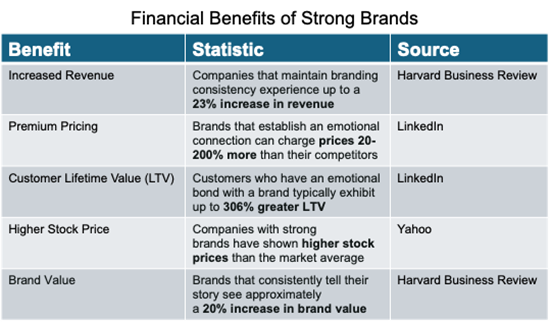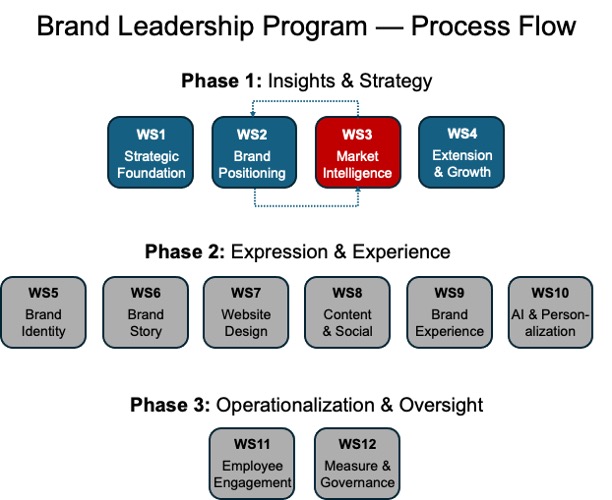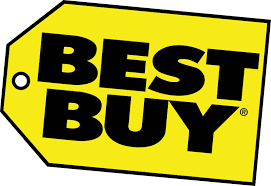Brand Leadership

The Appleton Greene Corporate Training Program (CTP) for Brand Leadership is provided by Mr. Duckler Certified Learning Provider (CLP). Program Specifications: Monthly cost USD$2,500.00; Monthly Workshops 6 hours; Monthly Support 4 hours; Program Duration 12 months; Program orders subject to ongoing availability.

Personal Profile
Mr. Duckler is founder and managing partner of a brand and marketing strategy consultancy based in Chicago, IL. He has over 30 years of line management and strategy consulting experience in branding and marketing, customer and consumer insights, and innovation. He wrote a bestselling book that guides readers on how to build a brand strategy that rises above the noise and monotony—transforming brands from indistinguishable into indispensable. In his most recent book, also a bestseller, he details how societal and technological trends—including transparency and purpose, the emergence of Gen Z, artificial intelligence, augmented/virtual reality, and Web3—will shape the future of marketing and brand-building for years to come. The book features 40+ one-on-one interviews with the world’s most influential Chief Marketing Officers.
Before founding his firm, Mr. Duckler was a senior partner in the New York office of a global brand strategy consultancy, and a partner in the Chicago office of another major global brand consultancy, where he co-led the brand strategy practice area. Over the years, he has successfully led engagements for Fortune 500 companies including ExxonMobil, Deloitte, Boeing, Hyatt Hotels, Best Buy, Carlson Companies, Cox Business, NBC Universal, Wrigley, Manpower Group, Abbott, The Home Depot, cars.com, and LexisNexis. Prior to consulting, he spent 10 years in brand management and consumer and customer marketing for Unilever and The Coca-Cola Company.
Mr. Duckler is also a frequent speaker on key topics related to brand and marketing strategy. In 2021, he delivered a TEDx talk—Define Your Differentiator—at the Cal State-Fullerton TEDx event in Orange County, CA. Over the past 20 years, he has spoken at dozens of high-profile events across five continents. He is a faculty member of the Association of National Advertisers (ANA) Marketing Training & Development Center, where he facilitates workshops for member organizations on key topics related to brand strategy. Mr. Duckler also chaired the American Marketing Association’s (AMA) Annual National Marketing Conference for four consecutive years. Additionally, he is a frequent interview guest on brand- and marketing-related podcasts, including The Backwards Hat CMO, On Branding, The MarTech Podcast, Brands On Brands, and Confessions of a Marketer.
Mr. Duckler earned a B.S. in Business from the University of Minnesota and an M.B.A. from the University of Michigan.
To request further information about Mr. Duckler through Appleton Greene, please Click Here.
(CLP) Programs
Appleton Greene corporate training programs are all process-driven. They are used as vehicles to implement tangible business processes within clients’ organizations, together with training, support and facilitation during the use of these processes. Corporate training programs are therefore implemented over a sustainable period of time, that is to say, between 1 year (incorporating 12 monthly workshops), and 4 years (incorporating 48 monthly workshops). Your program information guide will specify how long each program takes to complete. Each monthly workshop takes 6 hours to implement and can be undertaken either on the client’s premises, an Appleton Greene serviced office, or online via the internet. This enables clients to implement each part of their business process, before moving onto the next stage of the program and enables employees to plan their study time around their current work commitments. The result is far greater program benefit, over a more sustainable period of time and a significantly improved return on investment.
Appleton Greene uses standard and bespoke corporate training programs as vessels to transfer business process improvement knowledge into the heart of our clients’ organizations. Each individual program focuses upon the implementation of a specific business process, which enables clients to easily quantify their return on investment. There are hundreds of established Appleton Greene corporate training products now available to clients within customer services, e-business, finance, globalization, human resources, information technology, legal, management, marketing and production. It does not matter whether a client’s employees are located within one office, or an unlimited number of international offices, we can still bring them together to learn and implement specific business processes collectively. Our approach to global localization enables us to provide clients with a truly international service with that all important personal touch. Appleton Greene corporate training programs can be provided virtually or locally and they are all unique in that they individually focus upon a specific business function. All (CLP) programs are implemented over a sustainable period of time, usually between 1-4 years, incorporating 12-48 monthly workshops and professional support is consistently provided during this time by qualified learning providers and where appropriate, by Accredited Consultants.
Executive summary
Brand Leadership
What is a brand?
Contrary to popular belief, brands are far more than the logos, symbols, wordmarks, or taglines that represent them. These are merely examples of creative expression. Brands are also more than the names that embody them or the trademarks that protect their value. Simply put, a brand is a promise made by a company to its target audience, whether that brand represents a corporation, business unit, product line, or another business entity.
With this definition in mind, it makes sense that a brand is the sum-total of all past perceptions stakeholders hold for the brand, based on firsthand and/or indirect experiences. A brand has equity which reflects the extent to which it consistently delivers on its stated or implied promise. Everything pertaining to a brand—from the products and services it represents to the interactions and experiences it delivers—either adds to or detracts from its perceived equity.
There are several characteristics that are common to most strong brands. First, a strong brand has a positioning (or promise) that is relevant, compelling and motivating. In other words, its target audience finds the promise appealing. Second, a strong brand’s positioning is meaningfully differentiated. It has a unique value proposition that clearly separates it from other alternatives in the market. Finally, the positioning of a strong brand is credible… in other words, there is sufficient proof in the market to back-up the promise the brand makes to its target audience.
Importantly, world-class brands don’t happen by chance. They are the result of diligently following a disciplined process… consistently over time. This process is simultaneously: strategic and creative, rational and emotional, and intuitive and data-driven.
Why are brands so important?
Roberto Goizueta, former CEO of The Coca-Cola Company, once said, “All our factories and facilities could burn down tomorrow, but you’d hardly touch the value of the company…all that lies in the goodwill of our brand franchise. Our company’s name and trademark are by far our most valuable assets.” In fact, brands are often considered a company’s most valuable intangible assets, and they possess real economic value in the market. For example, in 2023, Apple topped global consultancy Interbrand’s Best Global Brands list with an eye-popping valuation of $503 billion—or over a half trillion dollars!
Importantly, this is not the market capitalization of the company’s stock… it is the value attributed solely to the Apple corporate brand.
With so much at stake, it is easy to see why strategically building and proactively managing brands is a critical responsibility for any company seeking to establish a competitive advantage in today’s marketplace. In fact, according to a Harvard Business Review article, “By the end of 2023, over 75% of businesses worldwide will invest more into their brand strategies than infrastructure development.” Fortunately, just like with any other strategic asset, there are tried-and-true business processes and protocols that can be put in place to ensure their economic value is maximized in the near-term and maintained over the long-run.
What are the key challenges to building strong brands?
There are several common challenges and obstacles to effective brand-building that make having a proven, systemic process in place essential to achieving long-term success. First, many marketers struggle to master the strategic foundation and principles that need to underpin branding. Brand positioning, brand architecture, and brand growth strategy are perhaps the best examples of the critical role strategy plays in branding.
Importantly, brand strategy should be developed with both an inside-out and outside-in orientation. This means brand strategy needs to be inextricably linked to business strategy (i.e., inside-out). Furthermore, it needs to be grounded in a solid understanding of consumer or customer behavior (i.e., outside-in). Without this dualistic approach, brand strategy—and all marketing activation that follows—is likely to fail in the long-run.
Another common challenge for marketers is seamlessly transitioning from strategy to execution. In other words, even once a thoughtful strategy is in place, the creative expression and activation that follow are not consistent with it. This is commonly referred to as executing “off-brand,” and is particularly common in digital brand activation. For example, when it comes to digital tactics such as content marketing and social media, so-called industry best-practices often rule the day, with brand strategy (in particular, brand positioning) playing a lesser role, or worse, completely ignored.
The final common challenge in brand-building pertains to the ongoing management and governance that is required to ensure enduring success for the brand portfolio. As with any business function, brand management requires continuous and ongoing tracking and measurement to ensure strategic objectives are being met, and to course-correct when this is not the case. Additionally, a governance system ensures that brand processes, standards, and guidelines are clearly understood and consistently adhered to across the enterprise.
What are the benefits of building and maintaining a strong brand portfolio?
A multitude of benefits accrue to companies that successfully follow a disciplined approach to strategic brand-building. Some of the benefits are considered “soft” in that they are not immediately monetizable. Examples of soft metrics include exceptional brand health metrics, such as awareness, consideration, and purchase intent. They also include “owning” desirable attributes or associations the brand wants to be known for (e.g., high performance, efficiency, leadership, forward-thinking).
Another set of benefits are considered “hard” because they have a more direct impact on a company’s bottom line. These benefits are usually the result of sound strategy, disciplined execution, and achievement of the above “soft” metrics. Examples include superior revenue, market share, premium pricing, market penetration, profitability, and other traditional business performance metrics.

What to expect from this course
This course will teach the fundamentals of effective brand strategy and execution. It is a process-driven approach to brand-building that dramatically increases the likelihood of achieving enduring success.
Importantly, the principles in this course apply whether:
• Your company is B2B or B2C
• You are a small start-up or a multi-national corporation
• Your brand portfolio is a Branded House (i.e., a single, well-established master brand like Apple), a House of Brands (i.e., numerous product brands operating independently from one another, like Unilever), or a Hybrid (i.e., somewhere in between the two extremes)
• You are relatively new to brand-building or are seeking to re-evaluate or modify an established brand portfolio
Curriculum
Brand Leadership- Part 1- Year 1
- Part 1 Month 1 Strategic Foundation
- Part 1 Month 2 Brand Positioning
- Part 1 Month 3 Market Intelligence
- Part 1 Month 4 Extension & Growth
- Part 1 Month 5 Brand Identity
- Part 1 Month 6 Brand Story
- Part 1 Month 7 Website Design
- Part 1 Month 8 Content & Social
- Part 1 Month 9 Brand Experience
- Part 1 Month 10 AI & Hyper-personalization
- Part 1 Month 11 Employee Engagement
- Part 1 Month 12 Measurement & Governance
Program Objectives
The following list represents the Key Program Objectives (KPO) for the Appleton Greene Brand Leadership corporate training program.
Brand Leadership- Part 1- Year 1
- Part 1 Month 1 Strategic Foundation – Brands are highly valuable intangible assets, and this workshop will demonstrate the numerous ways strong brands accrue economic value for the companies that strategically manage them over time. Since they represent assets with real market value, they must have well-defined strategic roles that are inextricably linked to business strategy. This critical business/brand linkage is why one of the most important outputs of the first workshop is a formal documentation of business strategy. Another important component of the workshop will be to define the optimal brand architecture for the portfolio, which dictates the type of relationship any given brand within the portfolio should have with other brands. Similarities and differences between corporate brands and product brands will also be discussed; and brought to life through real-world examples. Finally, the workshop will conclude with a comprehensive assessment of your brand’s current alignment with business strategy, and an articulation of areas for optimization that are consistent with brand strategy best practices.
- Part 1 Month 2 Brand Positioning – Brand positioning is often considered the strategic “North Star” for a brand, since it should serve as the starting point for all brand activation that is to follow. In short, positioning articulates the unique value proposition for the brand, and why a customer or consumer should purchase the brand’s product or service offerings. Importantly, it also should articulate what differentiates it from competitive alternatives. There are four bases for differentiation: “what” the brand does, “how” the brand does what it does, “why” the brand does what it does, and “who” the brand is (i.e., its personality). An effective brand positioning is one that is relevant, compelling, unique and credible. In this workshop, you will learn how to craft an effective brand positioning strategy, which typically includes a target audience, frame of reference, primary benefit, and supporting proof points. It will feature tools and frameworks that help identify the optimal brand positioning, including SWOT analysis, market segmentation, and perceptual maps. The workshop will also shed light on the critical role market intelligence (addressed in a future workshop) should play in both identifying and validating a high-potential brand positioning strategy.
- Part 1 Month 3 Market Intelligence – Market intelligence is a critical component of brand strategy. Without this essential ingredient, developing brand strategy would be an insular activity, based on little more than conjecture and internal assumptions and biases. Gaining sufficient market intelligence typically requires using both secondary and primary research, and both qualitative and quantitative methodologies. Secondary research is existing data and insights that has been collected by others. Examples include government statistics, university studies, trade publications, syndicated data, market research reports, and websites. Conversely, primary research is research you commission, tailored to your specific learning objectives. Examples include, in-depth interviews, quantitative surveys, focus groups, observation, ethnography, and social listening. The insights and intelligence gained from all these sources should inform virtually every component of brand strategy, including positioning, architecture, communication and messaging, extension and growth strategy, experience, and more. This workshop will cover the myriad ways to obtain market intelligence and the all-important “voice of customer.” It will also detail the advantages and shortcomings of various methodologies and techniques as they relate to specific brand strategy components. Finally, it will demonstrate how to analyze and interpret research findings, and to apply their implications to the brand strategy components defined in the first three modules.
- Part 1 Month 4 Extension & Growth – When it comes to brand management, a commonly accepted best practice is to build and maintain a portfolio of “fewer, stronger global brands.” In order to grow, this requires skillfully extending existing brand assets both horizontally (into new segments and markets) and vertically (across different price/value tiers). However, brand extension is a delicate balance. Play it too safe, and the result is very often ho-hum, close-in line extensions that disappoint in the market. Stray too far from your brand positioning and you risk brand dilution, or even worse (e.g., Colgate Kitchen Entrees and Harley Davidson cake decorating kits). The key to successful extension is to find the “sweet spot” between market and brand—i.e., the intersection of unmet customer needs and brand relevance. Successful extension also requires looking beyond tangible features and attributes to leverage the intrinsic and intangible associations of the brand. In this workshop, you will learn how to use your brand positioning as inspiration for growth opportunities—as opposed to merely a guardrail to keep it safe. This includes developing a Brand Credibility Footprint, which establishes boundaries that dictate how a brand can (and cannot) extend safely in the marketplace. The workshop will also highlight the most common pitfalls to avoid when it comes to brand extension.
- Part 1 Month 5 Brand Identity – Once a compelling brand positioning has been identified, we turn our attention to expression—including visual and verbal identity. A brand’s visual identity consists of all visual components of the brand, including logo, wordmark, color palette, typography, imagery, iconography, and more. Verbal identity is the way a brand communicates through words to create a distinctive personality. It does this through language, voice, tone, naming, and messaging. While creativity is obviously important in the brand identity development process, it’s equally important to remain “on brand” by ensuring the visual and verbal identity systems are consistent with brand positioning. In this workshop, you will learn how to effectively develop visual and verbal brand expression that is not only creative and aesthetically pleasing, but consistent with brand strategy. It will introduce some of the critical tools and frameworks that assist in this process, including creative briefs, messaging pillars and matrixes, naming grids, standards and guidelines, and brand books. The workshop will also address the topic of naming. This includes a five-step process for developing a new name, and how to build a logical naming convention that ensures consistency across the brand. A uniform naming convention increases clarity for customers and makes it easier for them to “navigate” the brand’s portfolio of products and services to determine the optimal solution from among a variety of potential offerings.
- Part 1 Month 6 Brand Story – Many historians and psychologists believe that storytelling is one of the defining characteristics of our species. This is because great stories create strong emotional connections between people. This is also true in the business world, as research consistently shows that both consumers and business customers are considerably more likely to purchase from a brand that “tells a story they can relate to.” Simply put, a brand story is a brief narrative that helps bring the brand positioning to life in a very approachable and entertaining way. It does this by building a powerful emotional connection between the brand and its target audience. This workshop will introduce the seven common story “archetypes” found in literature, and it will demonstrate their relevance and application in the world of brand. It will detail the key components and characteristics common to many successful brand stories, including effective character development, establishing tension, and problem resolution. Additionally, it will introduce a process for developing a compelling brand story—consistent with the brand’s positioning—that taps into a company’s origin, purpose, culture, or unique competence. Finally, guiding principles and best practices for brand storytelling will be provided, along with valuable sources for inspiration when seeking to develop a brand story.
- Part 1 Month 7 Website Design – Digital activation has dramatically disrupted the world of brand-building and has forever changed the relationship brands have with customers. Unfortunately, all too often these forms of activation are driven by so-called digital best practices and guiding principles, and they are devoid of the brand strategy they should support. This workshop will demonstrate how websites—like any other form of brand activation—should be guided by brand positioning and strategy. Specifically, it will demonstrate how to ensure the brand’s visual and verbal identity (addressed in a previous workshop) is reflected in the website’s design. This includes color scheme, typography, logo placement, imagery, graphics, and brand voice. Similarly, the site’s user experience (UX) and user interface (UI)—which includes structure, navigation, and layout— needs to feel consistent with the brand’s “offline” experience. Elements of the brand’s story should be woven throughout site, especially in the About Us section and in customer testimonials and case studies. To ensure search engine optimization (SEO), the site should feature keywords that align with the brand’s positioning and incorporate words the target audience is likely to use. Additionally, meta descriptions and titles should reflect the brand’s unique value proposition. Finally, content strategy and social media—addressed in the next workshop—further round-out the online ecosystem and help ensure a consistent, omnichannel brand experience.
- Part 1 Month 8 Content & Social – Content marketing is essential for any brand seeking to establish market dominance. It is the creation and sharing of online material (e.g., articles, blogs, videos, and social media posts) that does not explicitly promote a brand. Rather, it is intended to gradually generate interest in the company’s products or services over time. The first component of this workshop will demonstrate how to craft a content strategy that builds brand credibility, attracts new customers, and engenders customer loyalty—all in a way that is consistent with brand positioning. Additionally, it will show how artificial intelligence (AI) is rapidly transforming content marketing through enabling a higher degree of personalization through every phase of the customer journey, including content research, creation, personalization, curation, and optimization. The workshop will address the most common issues and challenges that arise from the use of AI in content development and marketing, including data integrity, systemic biases, copyright and IP ownership, and brand authenticity—and propose solutions for overcoming these common obstacles. The second component of this workshop will be dedicated to the all-important role social media plays in delivering a brand’s content. Here, the market is seeing the emergence of content Creators, along with increasing popularity of micro-influencers and virtual influencers. Collectively, these trends have resulted in a shift in editorial control from brands to customers, which marketers need to acknowledge and accommodate. The workshop will also highlight guiding principles for social media platform selection and best practices for brand-appropriate social media engagement. In all, this will help ensure that content marketing and social media not only drive short-term business results, but also build long-term brand equity.
- Part 1 Month 9 Brand Experience – According to studies by management consultancy McKinsey & Co., brand experiences are the most powerful form of word-of-mouth communication, accounting for 50 to 80 percent of purchase decision in any given product category. Brand experience is the sum-total of all interactions and touchpoints a brand has with its target audience, whether it’s before, during, or after purchase. This includes a brand’s website, collateral, customer service, and more. As with any form of brand activation, experience should be consistent with—and inspired by—brand positioning. This workshop will introduce the concept of “customer journey,” and how to craft an unforgettable customer experience that remains true to the brand’s promise. Importantly, it will cover all forms of experience: physical, digital, and virtual. It will introduce the concept of “signature touch points”—interactions that are so powerful and uniquely identifiable that they define the brand in customers’ minds and distinguish it from competitors (e.g., Apple’s Genius Bar, Tiffany’s blue box). Importantly, emerging technologies such as extended reality (XR) and Web 3 are making brand experiences considerably more immersive than ever before. As such, the workshop will show how virtual reality (VR), augmented reality (AR), and Metaverse are transforming the concept of customer and brand experience by providing highly interactive in-store navigation, virtual try-on capabilities, B2B and B2C product demonstrations, and more.
- Part 1 Month 10 AI & Hyper-personalization – Artificial intelligence has experienced a rate of adoption never seen before in a new technology. In 2024, nearly 80% of CMOs surveyed indicated they are using (or are in the process of testing) AI in their marketing operations. As demonstrated in the previous content marketing workshop, AI provides brands the ability to quickly and easily micro-segment audiences and hyper-personalize content at levels that were previously thought unimaginable. This same concept of hyper-personalization can be applied to other elements of brand activation, including product/service bundles, email communication, website experience, and even dynamic pricing. In fact, some believe we are gradually approaching a level of personalization that Don Peppers & Martha Rodgers forecasted in their 1994 bestselling book, The One-to-One Future. This workshop will demonstrate the most popular uses case of artificial intelligence in the world of marketing and brand-building. This includes everything from gaining deeper market insights and obtaining customer feedback to running predictive analytics and conducting real-time A/B testing. Collectively, these use cases are strengthening and enriching the relationship brands have with customers, and helping marketers establish a competitive advantage for their brands. Finally, the workshop will propose a road map for extending the use of AI in marketing operations, regardless of your current state of adoption.
- Part 1 Month 11 Employee Engagement – Employees represent a critical stakeholder group for brand management. Specifically, they are an important link between a brand and its customers, especially in the B2B arena. It’s useful to consider employee engagement from two perspectives: internal and external. Internally, the goal is to ensure employees understand and embrace brand positioning and the role they play in delivering it. Externally, the emphasis shifts to establishing the company as an “employer of choice” through effective employer branding. In the internal component of this workshop, you will learn key concepts that underpin effective employee brand engagement, and its close tie to company culture. This includes the critical role senior cross-functional leadership plays in endorsing the brand strategy, and the importance of identifying and empowering brand advocates—enthusiastic employees who will consistently champion the brand to colleagues. Turning the focus externally, the workshop will help establish the notion of “employer brand” to the outside world. A critical step in this process is the development of an Employer Value Proposition (EVP), which stems from the brand positioning and articulates the essence of the company to prospective candidates. Importantly, the EVP and its accompanying campaign play an integral role in everything from recruiting and onboarding to ongoing engagement and employee retention.
- Part 1 Month 12 Measurement & Governance – Unfortunately, the chief marketing officer (CMO) has the shortest tenure of any executive in the c-suite—slightly over four years. This is in part due to the inability of most CMOs to establish a direct correlation between marketing investment and business performance—also known as marketing accountability. Legendary management consultant Peter Drucker once said, “You can’t manage what you can’t measure.” This tenet is as true for brand management as it is for any other business discipline. This workshop will cover three different categories of brand measurement: diagnostic, prescriptive and predictive. It will also reveal three different types of brand metrics that are critical to track and manage over time: perception, behavior, and performance. Various market research techniques for establishing brand metrics will also be reviewed. The result will be a brand metrics dashboard that helps you track your brand’s progress toward its business- and brand-related goals, and that offers direction for course correction when necessary. This means your measurement program is not only diagnostic, but also prescriptive. Beyond metrics, the four pillars of brand governance (people, process, training, and technology) will be introduced to further ensure successful implementation of brand strategy and activation.
Methodology
Brand Leadership
When it comes to establishing a methodology for achieving brand leadership, there are several commonly accepted best practices to follow. First, as with many business disciplines, effective brand-building is equal parts strategy and execution. Even the most seasoned brand managers occasionally become enamored with a stunning new visual identity or novel form of digital activation, only to later realize it is not true to the brand positioning it’s intended to serve. World-class creative expression and flawless brand activation mean very little if the underlying brand strategy is not sound.
Second, brand strategy needs to simultaneously account for both internal company dynamics (e.g., overall business strategy, capabilities and competencies, and available resources) AND external market dynamics (e.g., customer needs and wants, macroeconomic environment conditions, and competitive activity). Ignoring either of these perspectives will undoubtedly lead to suboptimal brand performance in the long-run.
Finally, the process for brand-building tends to be relatively stage-gate, with insights-building and strategic activities preceding creative development and activation. Even if certain components of the process do not need to be conducted (e.g., because they’ve previously been completed or for some reason are not relevant for a particular company), the process still makes most sense when it’s executed in a predominantly linear manner. The three phases of the process are as follows: 1) Insights & Strategy, 2) Expression & Experience, and 3) Operationalization & Oversight.
Phase 1—Insights & Strategy
The first phase of the program builds the strategic foundation required for achieving long-term brand success. Workshop #1 introduces the topic of brand strategy and brand architecture. The latter determines the optimal number of brands the portfolio should have, the strategic role and range (i.e., coverage) for each brand, and what types of relationships should exist between brands within the portfolio. Workshop #2 introduces the critically important concept of brand positioning (also known as the brand’s “strategic North Star”). Workshop #3 demonstrates the important role of knowledge building and insights gathering through both primary and secondary means, and qualitative and quantitative techniques. Finally, Workshop #4 illustrates how to successfully extend brands both horizontally (into different categories, segments and markets) and vertically (across different price/value tiers)…Importantly, the first three modules in Phase 1 have been sequenced to allow for potentially conducting new primary market research, IF necessary and desired. Specifically, at the conclusion of Workshop #2, you will have the option to either finalize your brand positioning strategy OR conduct market research to further validate it.
Phase 2—Expression & Experience
With a solid strategic foundation in place, we can turn our attention to “activating” the brand in the marketplace. Module 5 deals with brand identity, which includes both visual and verbal expression. Module 6 demonstrates how the identification and articulation of a thoughtful brand story can infuse emotion and passion into a brand and help win the hearts of its target customers. In Module 7, the brand’s website is front-and-center, with particular emphasis on how user experience (UX) and user interface (UI) need to be informed by, and consistent with, the brand’s positioning. Module 8 addresses the critical role that two forms of digital activation—content marketing and social media—serve in building customer relationships and engendering brand loyalty. Finally, Modules 9 and 10 deal with brand experience, including both the online and offline touchpoints that comprise the customer journey—from initial awareness to loyalty and advocacy.
Phase 3—Operationalization & Oversight
The emphasis in Phase 3 is on operationalizing the brand internally and equipping it for enduring success. Module 11 takes on employee engagement, which includes both educating employees on the role brand plays within the organization (i.e., change management), and employer branding, which is how to use brand to help establish a company as an “employer of choice.” Finally, Module 12 is about measurement and governance, with particular emphasis on how to establish a brand metrics system and dashboard that tracks a company’s progress toward target objectives, and guides it to course-correct appropriately if/when business or market conditions warrant.

Industries
This service is primarily available to the following industry sectors:

Consumer Goods
History
Consumer packaged goods (CPG)—sometimes referred to as fast-moving consumer goods (FMCG)—is often considered to be the birthplace of modern brand management. In fact, Procter & Gamble (P&G) is often credited with pioneering the function of brand management. In 1931, P&G’s Neil H. McElroy wrote a memo proposing that the company create “brand men” to be responsible for managing individual brands. This was a departure from the company’s tradition of managing product lines. The rapid growth of consumer markets that followed—combined with the increasingly prominent role of advertising beginning in the 1950s—led to the development of marketing strategies that emphasized a brand’s personality and identity. By the early 1980s, the concept of “brand equity”—which acknowledges the value a brand adds to an offer over-and-above mere product attributes and functional benefits—became commonplace.
Today, in most consumer goods companies, brand management is seen as a complex multi-disciplinary approach that involves not just marketing, but other strategic business functions such as manufacturing, operations and finance. In fact, someone with a CPG background is still considered by many to be “classically trained” and well-prepared for opportunities in brand management, marketing, and general management.
Current position
Within the world of consumer goods, brand management has experienced transformational change in recent years. Perhaps no single factor has been a more profound catalyst than technology. With the debut of the internet, virtually any brand, global or local, can reach customers and prospects around the world with minimal effort. The barriers to market entry have not just been lowered—they have been virtually eliminated. Social media, digital streaming media, and mobile networks and smart devices have ushered in a new era of real-time, unfiltered, highly personalized, multichannel communications that are rewriting the rules of brand management. As a result, brand managers no longer “control the dialogue” when it comes to brand-building—that role now belongs to consumers.
Additionally, new distribution channels, including direct to consumer (DTC), have disrupted the worlds of both brand management and traditional retail. Consumers are faced with a proliferation of choice never seen before in the marketplace. The early days of brand management were characterized by fewer options in the market—fewer categories, fewer brands, and fewer SKUs. Today there are more competitors going to market with more brands than ever before. A more crowded and competitive marketplace makes it infinitely harder for any given brand to stand out from the pack. As if this were not enough, retailers have become competitors to traditional national brands with the increased sophistication and consumer appeal of private label alternatives.
Future outlook
Emerging technologies will continue to disrupt the world of consumer goods for the foreseeable future. Artificial intelligence (AI), including machine learning and predictive analytics, is enabling a level of personalization and customization that was once considered unimaginable—practically approaching the concept of one-to-one marketing. Extended reality (XR), including virtual reality (VR) and augment reality (AR), is providing consumers with a more dynamic, immersive and overall satisfying brand experience. Web3, along with its underlying blockchain technology, promises an online future where tech giants like Facebook and Google no longer stand between brands and their consumers, opening-up opportunities for greater collaboration and relationship-building.
Collectively, these technologies and their associated capabilities are raising consumers’ expectations regarding virtually every element of brand management—from product offering and messaging to in-store experience and customer service. While these technologies have the potential to raise brands to new levels of satisfaction and loyalty, they also pose challenges and obstacles that must be skillfully navigated in the near-term.

Food & Beverage
History
Prior to the nineteenth century, our society was largely agrarian—i.e., food was primarily produced and consumed locally. This began to change in the nineteenth century. The Industrial Revolution saw the emergence of factories, automation, and improved means for transportation, which made the concept of mass production possible. Additionally, there were scientific breakthroughs in the areas of food preservation and packaging (e.g., canning) that made food products more shelf stable, and enabled them to be transported over greater distances.
However, there was also a third, less obvious, factor that contributed to the evolution of the food and beverage industry. Savvy marketing companies like Heinz, Kraft, Nestle, and Coca-Cola recognized the importance of product differentiation and brand-building in this new world order—one in which the food we eat was no longer seen as merely a commodity. These companies, and hundreds like them that followed, played a significant role in shaping what is now the modern-day food and beverage industry. And branding continues to play a major role today in food and beverage companies’ success (or lack thereof) in a highly dynamic and competitive global marketplace.
Current position
Today, the global food and beverage industry is, according to one estimate, approximately $8.1 trillion. Of that total, roughly $6.1 trillion is food and $2.0 trillion is beverage. There are several macro societal and economic trends that have been dominating this industry in recent years. First, consumers are increasingly seeking healthier options in the food they eat. This has caused a surge in demand for products that are fat free, low in sugar, free from additives and preservatives, organically grown, gluten-free, and plant-based. Importantly, consumers are demanding that these health-rated benefits not come at the expense of convenience. Hectic lifestyles are driving demand for food and beverage options that are ready-to-eat, or at the very least, easy-to-prepare. Demand for on-the-go alternatives and single-serve packaging—for food that is also reasonably nutritious—has grown steadily over the past two decades.
Additionally, consumers are seeking food alternatives and eating experiences that are personalized for them. Brands are meeting these demands by creating product solutions that are more customizable than ever before. Personalized nutrition plans and customizable meal kits—allowing for variations in nutritional content and flavor preferences—are replacing one-size-fits-all solutions.
Finally, recent inflationary pressure, including increasing raw material, labor, and transportation costs, is putting food and beverage companies in the unenviable position of either passing on higher costs to consumers or accepting lower profit margins.
Future outlook
The recent trends referenced above—i.e., increased focus on health and wellness, demand for convenient alternatives, and desire for more personalized solutions—will likely continue for the foreseeable future. Encouragingly, several emerging technologies will significantly aid food and beverage brands in meeting these demands more effectively and efficiently. The use of artificial intelligence and predictive analytics can help food marketers better anticipate differing and ever-changing consumer needs and preferences, and tailor more agile solutions to meet those demands. Blockchain technology will likely play an important role in ensuring food safety and security by providing unprecedented levels of transparency into the supply chain, including the origin of food consumers are considering purchasing.
Additionally, the combination of wearable tech devices and smart packaging will provide real-time nutritional data to consumers, enabling them to make better and more informed choices about the foods they consumer. From a product offering perspective, the food and beverage industry will also likely see a greater degree of “globalization” when it comes to cuisines and flavors, reflecting an increasingly more connected world and desire to experiment with less familiar cultural alternatives. This could possibly take the form of fusion or hybrid foods that blend the best features and ingredients from multiple cultures and cuisines.
Retail
History
In the 1800s, railroads and urban centers made the concept of department stores possible. As cities grew, shopping options remained limited to stores within walking distance. The general store, tailor, and department stores couldn’t be too far away, or visiting one became an all-day affair. People within a community relied on neighbors, shop owners, and local advertisements to discover new products. When the Sears catalog arrived in the early 1900s, people could for the first time in history order products they didn’t see in person. Not long after that, shopping malls with specialty stores popped up to serve the blossoming suburbs, thanks in large part to the automobile. Instead of going to one of the few clothing boutiques in a town, people could suddenly shop at twenty or more apparel shops within an afternoon. And discount chains and big-box stores joined these malls during the 1960s and 1970s, transforming consumers’ errands into quicker, more convenient items on their to-do lists.
Then the internet happened, dramatically shortening the distance between the customer and product once more. The giants that had been comfortable since the 1970s couldn’t handle this new disruption, and by the year 2000, seven of the eight biggest brick-and-mortar retailers in the United States had either gone bankrupt, been acquired, or tumbled into obscurity. Digital retailers like Amazon and Pets.com introduced online shopping, hit a snag during the dot-com bubble, but continued their universal takeover of distribution until digital retailers became the behemoth we know today.
Current position
Today we are seeing an increasing surge toward true omnichannel retailing. Most consumers don’t delineate between an online purchase and an instore shopping trip—it’s the same brand to them. Savvy retailers recognize this and strive to provide a seamless customer experience between their online and physical stores. This includes greater integration between online and instore inventory systems, resulting in more accurate and reliable real-time stock updates. Without this capability, consumers’ desire to begin a shopping trip on a company’s website and complete it in their physical store (or the reverse, for that matter) is significantly compromised. Recognizing this need, leading retailers like Walmart, Costco, Wayfair, and Best Buy have heavily invested in buy online, pick up in-store (BOPIS) and curbside pickup options.
Separately, retailers are doubling down on private label expansion. Long gone are the days of “generic.” The private label lines of retailers like Walmart and Costco don’t require customers to trade-off quality and style to get a lower price. Instead, Sam’s Choice and Kirkland Signature are exclusive, high-margin product lines offered at competitive prices. These exclusive labels emphasize quality and prestige. They not only drive customer loyalty, but also help infuse valuable brand equity into the retailer’s master brand. Additionally, many retailers are following the lead of national brands by creating private label lines that span multiple consumer segments. For example, Great Value and Equate (Walmart), Kirkland Signature (Costco) and Insignia (Best Buy) appeal to consumers with myriad preferences across multiple need states and price/value tiers.
Future outlook
Emerging technologies like artificial intelligence (AI) and extended reality (XR) will enable retailers to significantly raise the bar on brand experience and overall customer satisfaction and loyalty. AI is rapidly ushering in an era characterized by micro-segmentation and hyper-personalization. The technology allows retailers to quickly and accurately identify and segment prospective customers into dozens, even hundreds of specific types of customers, each with highly distinct and nuanced preferences. Having such granular data on these micro-segments allows retailers to market to them more relevantly. For companies with thousand-plus item product lines, AI can segment the entire file and make product recommendations tailored to the expectations of each micro-segment, allowing retailers to introduce customers to the products they’re most inclined to buy.
Additionally, augmented reality (AR) is helping take the instore experience to the next level, providing consumers myriad capabilities such as virtual try-ons, access to relevant product information and comparisons, and more dynamic and immersive instore navigation and product demonstrations. And blockchain technology promises greater supply chain transparency, improved security of consumers’ personal and financial information, and revenue-generating and loyalty building capabilities through tokenization and more sophisticated gamification programs. Collectively, these technologies are making it an exciting time to be in retail.
Professional Services
History
Professional services are comprised of a collection of sectors, including legal, accounting, management consulting, investment banking and other advisory related service offerings. Broadly speaking, services provided by these firms fall into one of two categories: complementary or incremental. Services are considered complementary when the client organization has the knowledge and skill set to perform them on their own, but they choose to outsource them to an external provider (often due to capacity constraints or opportunity costs). Conversely, services are considered incremental when the client does not possess the knowledge and skills required to perform the service, so they turn to outside experts to provide it.
Legal and accounting services can trace their origins back to ancient times (Egypt and Greece, circa 3000 BC). The consulting industry emerged much later, in the 19th and 20th centuries, with the likes of Arthur D. Little and McKinsey & Company among the early pioneers. Unsurprisingly, demand for these specialized services grew significantly during the post-Industrial Revolution period to address the needs of a business world that was becoming increasingly more global, sophisticated, and complex.
Current position
Modern-day professional services are characterized by increasing levels of diversification and specialization, and this is being reflected in their branding efforts. As consultancies and other advisory firms seek to establish credibility in more narrow and sometimes adjacent fields, they are using brands to help pave the way for greater “market permission.” For example, EY-Parthenon (formed by the merger of The Parthenon Group and Ernst & Young in 2014), helped the latter establish credibility in management consulting, corporate strategy, and M&A—to complement its more traditional advisory services in areas like technology, risk management, and finance. Similarly, in 2014, PwC acquired strategy consultancy Booz & Company. Booz & Company was rebranded as Strategy&, and today it serves as the strategy consulting arm of PwC.
Additionally, the industry is becoming increasingly more global in nature, with firms establishing networks, partnerships, and alliances across different countries and continents to better serve their multi-national client base. This globalization also brings a host of challenges that stem from cultural differences, variations in international law, and challenges with cross-border collaboration. There is also increased regulatory pressure, especially in financial services.
Finally, like many of their clients, professional services firms are taking on digital transformation. This includes using AI-driven marketing platforms, social media, and sophisticated CRM systems to manage relationships and enhance the client experience.
Future outlook
Looking ahead, there are both challenges and opportunities facing the professional services industry. In addition to the globalization and regulatory challenges referenced above, professional services firms are wrestling with cybersecurity risks, the potential threat that AI poses to traditional service delivery models, and issues pertaining to talent acquisition and retention (Millennials and Gen Z have different expectations regarding work-life balance, career development, etc.).
From a branding perspective, it’s becoming increasingly difficult to establish meaningful differentiation in a crowded and competitive field. For example, the “Big 4” is considered by some to be a stronger “brand” than any of the individual brands that comprise this elite group. To be sure, brand differentiation will be a key determinant of success for many professional services firms in the coming years, especially for those in the small- and mid-market sectors.
The good news is that the same emerging technologies that are causing some of the challenges referenced above also bring significant new capabilities and marketplace opportunities. For example, clients are increasingly seeking more personalized services and solutions that are tailored to their specific needs and business challenges. AI is uniquely qualified to help address this need. AI could also pave the way for developing real-time marketing strategies and agile brand management that is better equipped to respond to rapidly changing business dynamics. Similarly, blockchain technology may help address the cybersecurity and data privacy concerns that plague many professional services firms today.

Technology
History
Even though high tech is a nascent industry (relatively speaking), its history and evolution are quite fascinating. Following World War II, companies like IBM and Hewlett-Packard (HP) began embracing branding to help define themselves. Those efforts were more about establishing corporate identity than branding product-specific offerings. Then in 1984, Steve Jobs and Apple introduced the Macintosh, which represented a monumental shift in technology branding. It was accompanied by an iconic ad that proposed a new way of thinking and challenged the status quo. Forty years later, the ground-breaking ad, which debuted during the Super Bowl, is widely credited with establishing the game as television’s biggest commercial showcase.
The 1990s and 2000s saw the rise of the internet and the dot-com boom, with brands like Amazon, Yahoo, and Google becoming overnight sensations. The subsequent burst of the dot-com bubble in 2000 helped reinforce the importance of investing in strategic and enduring brand-building in the tech industry… and beyond.
The next big wave in tech branding—featuring the emergence of mobile marketing and social media—followed over the next two decades. Companies like Facebook, Twitter and Instagram revolutionized digital branding by establishing platforms for brands to more prominently showcase their distinct personalities and engage more directly with end consumers. User-generated content and social media led to a more interactive and personal approach to brand building—and one in which consumers could exert far more influence—if not outright control—over a brand’s destiny.
Current position
Today, Apple, Amazon, Facebook (now Meta) and Google are among the most valuable brands in the world. This is a remarkable feat considering they weren’t even in existence in the 1990s. Their branding emphasizes innovation and digital integration. Apple’s 2007 introduction of the iPhone completely revolutionized mobile technology, and further solidified its brand as a leader in cutting edge technology and innovation. In fact, Apple has become the quintessential lifestyle brand, transcending mere product offerings (and even their underlying technology) to be known as a brand that stands for elegant design and a superior user experience.
Community building is a powerful social trend impacting the branding of digital brands—especially post-pandemic as consumers are seeking greater levels of interaction and connectivity. Peloton with its interactive studios and Leaderboard is one example of this. Twitch, a live-streaming platform primarily for gamers, has also established a community where viewers, gamers and streamers can interact with one another in real-time. So-called physical world or “offline brands” are embracing the trend toward community building as well, as demonstrated by Legos tapping into its massive community for suggestions on new set ideas, and Patagonia, which has built a community around environmental and social activism—topics that resonate deeply with its intensely loyal consumer base.
Future outlook
Perhaps more than any other industry, the future of branding within the technology sector is largely a mystery. This is, in part, because there are still so many unknowns regarding where these technologies themselves are headed, along with their respective use cases and the benefits they will ultimately yield.
However, it’s safe to say that a combination of emerging technologies—including artificial intelligence, extended reality, Metaverse, Web3, and blockchain—will play a large role in shaping branding efforts for years to come. This applies not only to the branding of the technology players themselves, but also the myriad companies and brands that will be redefined and enhanced by the technology. Of these emerging technologies, AI likely represents the most impactful force, both in terms of its potential for massive disruption and the unprecedented rate of adoption it has experienced in a relatively short period of time.
Locations
This service is primarily available within the following locations:

Chicago
Chicago, commonly referred to as the “second city” and “city of big shoulders,” is the third-largest city in the United Staes, behind only New York and Los Angeles. It has a population of 2.7 million residents, with approximately 9.8 million people residing in the broader Chicago Metropolitan Area. Centrally located in the U.S.’s Midwest, Chicago is considered a major transportation hub. In fact, it is estimated that approximately 1/3 of all freight in the U.S. moves through the area. Additionally, Chicago is home to several world-renowned educational institutions, including Northwestern University and the University of Chicago.
Importantly, the city is a nucleus for business in the United States and around the world, with a rich commercial history and a vibrant economy. Furthermore, its economy is one of the most diverse in the country, with no single industry employing more than 12% of the city’s workforce. Chicago is home to more than 30 Fortune 500 companies, including Boeing, McDonald’s, Walgreens, United Airlines, and Exelon. Additionally, the city has a large, educated workforce, including professionals in the areas of law, marketing, technology, finance, and engineering.
Although economically diverse, Chicago is a hub for several important industry sectors. It is a major financial center, home to the Chicago Board of Trade (CBOT) and the Chicago Mercantile Exchange (CME), which are now part of CME Group, the world’s largest futures and options exchange. It is also considered a global leader in derivatives trading, and home to major financial institutions like JPMorgan Chase, BMO Harris Bank, and Northern Trust.
Beyond the financial sector, Chicago is increasingly being recognized as a center for technology innovation and start-ups. For example, 1871—a prominent tech incubator—is one of the largest tech hubs in the U.S. Its mission is to foster innovation and entrepreneurship in Chicago. It does this through providing financial resources and support to startups and early-stage companies. With the support of 1871, entrepreneurs are better equipped to commercialize their ideas into viable business entities.
Finally, Chicago is known for its robust real estate market, both commercially and residentially. Its unique architecture is showcased in the city’s skyline, dominated by skyscrapers—e.g., the Willis Tower (formerly Sears Tower) and the John Hancock Center—helping it to be recognized as a center for the real estate and construction industries.

New York
With over 8 million residents across five boroughs, New York City—also known as the Big Apple—has the largest population of any city in the United States. The number is closer to 20 million when including the broader New York City Metro Area. The city is known as a mecca for business, fashion, arts and entertainment. New York is also arguably the most international city in the U.S., drawing millions of global tourists every year and serving as headquarters for the United Nations. It is also home to 45 Fortune 500 companies.
From an industry perspective, New York City is widely considered the financial capital of the world. Wall Street, the city’s financial district, is home to the two largest stock exchanges in the world: the New York Stock Exchange (NYSE) and NASDAQ. Additionally, major global banks, investment firms, and financial institutions—such as JPMorgan Chase and Citigroup—have their headquarters or significant operations in New York City. These factors, and many more, serve to make the city a global financial powerhouse for banking, corporate finance, insurance, and asset management.
Additionally, New York City is known for its dominant position in the media and entertainment sectors. Media stalwarts include NBCUniversal, ABC, CBS, Fox Corporation, Warner Brothers, Discovery, and HBO. Additionally, the city is home to famed Madison Avenue, with major advertising companies such as Omnicom Group, Interpublic Group (IPG), and BBDO Worldwide headquartered in New York. Finally, New York City has long been a thriving epicenter in the world of publishing, with Penguin Random House, Condé Nast, Simon & Schuster, HarperCollins, and the New York Times all calling NYC their home.
Technology and innovation are another important and thriving sector of the New York City economy. Frequently referred to as “Silicon Alley,” the city serves as a home base for countless start-ups and venture capital firms. New York’s reputation as an innovation epicenter is undoubtedly bolstered by its commitment to research and development, spearheaded, in part, by two prestigious, world-class universities: Columbia and NYU.

Atlanta
The city of Atlanta was founded in 1837, and it is widely considered the capital of the rapidly expanding Southeastern region of the United States. The city has experienced dramatic growth in recent decades, with a greater metropolitan area population of approximately 6 million people. Atlanta’s Hartsfield-Jackson International Airport has been the busiest airport in the world—both in terms of number of passengers and flights—since 1998. Atlanta is home to Emory University, Georgia Tech, Morehouse College and the Centers for Disease Control and Prevention. It is also home to 10 Fortune 500 companies, including The Coca-Cola Company, Delta Air Lines, The Home Depot, and UPS. In fact, it is one of the leading cities in the United States on this metric, trailing only New York, Houston, and Dallas.
In recent years, Atlanta has emerged as a major player in technology—particularly fintech. In fact, Atlanta is sometimes referred to as the “Fintech Capital of the South” due to its strong presence in the financial technology industry. NCR Corporation, Fiserv, and Global Payments are just a few of the more than 200 fintech companies that call Atlanta home. Similarly, the city is sometimes referred to as “Transaction Alley,” because a significant percentage of all U.S. financial transactions are processed by companies based throughout the Atlanta Metropolitan Area. Beyond fintech, cybersecurity is further evidence of Atlanta’s strength in technology. For this sector, the city draws from a deep and rich talent pool fueled by strong local universities and the proximity to government agencies like the CDC.
Finally, media and entertainment are also prominent sectors within Atlanta’s thriving business community, helping the city earn the reputation of “The Hollywood of the South.” This dominance manifests in several important ways. From a broadcast media and networks perspective, this includes everything from news and sports broadcasting to entertainment and lifestyle programming. The city is home to several major media players, including CNN, Turner Broadcasting System (e.g., TBS, TNT, and Cartoon Network), and The Weather Channel. Additionally, film and television production have been thriving in Atlanta. The state of Georgia’s film tax credit has made Atlanta one of the busiest production hubs in the country. Music, digital media, and gaming round-out what is a rapidly growing and increasingly prominent media and entertainment sector.

Los Angeles
Los Angeles, also known as the “City of Angels,” is one of the most vibrant and economically robust cities in the United States. Boasting a greater metropolitan population of over 13 million residents, it is the second largest city in the United States. Los Angeles is one of the most culturally diverse cities in the world. Its residents come from approximately 140 countries around the world, and they speak 185 different languages. Los Angeles county is headquarters for 14 Fortune 500 companies, including The Walt Disney Company, Mattel, DirecTV, Avery Denison, and Dole.
Although numerous sectors contribute to the Los Angeles economy, entertainment is arguably the most prominent. After all, Los Angeles has Hollywood, a neighborhood that is considered the birthplace of the American film industry. Accordingly, Los Angeles is home to prominent studios, including Fox, Disney, Sony, Paramount, NBC Universal, and Warner Bros. Additionally. many popular TV shows, including those produced by networks like ABC, CBS, NBC, and Fox, are filmed on sound stages in and around Los Angeles. More recently, the city has embraced the streaming trend, becoming a major production hub for companies like Netflix, Hulu, Apple TV+, and Amazon Studios.
Aerospace is another thriving sector of the Los Angeles economy. In fact, the city is sometimes referred to as the birthplace of modern aerospace. Industry leaders like Boeing, Northrop Grumman, Raytheon, SpaceX, Virgin Galactic, and Lockheed all call LA home. Unsurprisingly, the city has been at the forefront of the United States’ space exploration efforts. The Jet Propulsion Laboratory (JPL), a joint venture between NASA and Caltech, is responsible for the design and management of many of NASA’s robotic space missions, including the Mars rovers. Turning to the private sector, Los Angeles is also home to the commercial spaceflight revolution. SpaceX, founded by Elon Musk, has been a space travel pioneer, featuring the first privately funded spacecraft to reach orbit and the first privately funded spacecraft to dock with the International Space Station.
Finally, not to be outdone by Silicon Valley to the north, Los Angeles is a major player in the tech industry. This is particularly the case in sectors like entertainment technology, digital media, and gaming. The area, sometimes referred to as “Silicon Beach,” houses many tech startups and major companies like Tinder, Ring, Honey, and Snap Inc.

Boston
Boston is affectionately nicknamed “Beantown” because of the city’s historical association with baked beans, and the “Cradle of Liberty” because of its prominence in the Revolutionary War. The Boston metro area has a population of nearly 5 million people. The city is widely regarded as a global mecca for higher education—home to some of the most well-known colleges and universities in the world, including Harvard University, Massachusetts Institute of Technology (MIT), Boston University, Tufts University, and Boston College. It is also home to several Fortune 500 companies, including General Electric (GE), Liberty Mutual Insurance, State Street Corporation, and Biogen.
In terms of sectors, Boston is considered a global hub for the professional services industry, which includes consulting, legal services, accounting, advertising, and other business-related advisory roles. Major consulting firms like Bain & Company and Boston Consulting Group, both founded in the city of Boston, contribute to its reputation as a center for business strategy and management expertise. In addition to general management consulting, Boston has numerous boutique consulting firms that specialize in sectors such as technology, healthcare, financial services, and education. Finally, rounding out Boston’s prominence in professional services, are firms specializing in accounting, tax, financial advisory, legal services, HR & talent management, and marketing and advertising.
Boston’s tech footprint has grown rapidly in recent years, with significant contributions from both startups and established companies. The city is widely known for its innovation in key technology related areas like artificial intelligence, robotics, and cybersecurity. Boston’s numerous venture capital firms, accelerators, and incubators undoubtedly help propel the technology industry. Examples of successful Boston tech companies abound, and include marketing automation and inbound giant HubSpot, online retailer Wayfair, cloud and cybersecurity firm Akamai Technologies, sports technology firm DraftKings, and the automotive technology platform CarGurus.
Additionally, Boston has a thriving financial services sector, with a concentration in asset management firms, mutual funds, banks, insurance companies, and venture capital firms. Notable players include Fidelity Investments, Liberty Mutual Insurance, John Hancock Financial, State Street Corporation, and Wellington Management. Increasingly, Boston’s financial services sector is intersecting with technology to produce a thriving fintech subsector. Companies like Circle (a cryptocurrency and blockchain technology firm) and Toast (a restaurant point-of-sale platform) are examples of this trend.
Program Benefits
Marketing
- Portfolio clarity
- Superior positioning
- Customer experience
- Effective communication
- Market growth
- Increased ROI
- Increased productivity
- Competitive advantage
- Improved image
- Accelerated growth
Management
- Increased collaboration
- Leadership excellence
- Improved communication
- Energized team
- Empowered employees
- Positive environment
- Innovation culture
- Customer centricity
- Increased productivity
- Increased engagement
Human Resources
- Reduced Turnover
- Leadership Development
- Talent Assessment
- Talent Retention
- Targeted Recruitment
- Career Clarity
- Employee Development
- Reduced Stress
- Improved Coaching
- Employer Branding
Testimonials

Deloitte
“I’ve worked with Mr. Duckler and his team over the past 15 years on multiple projects and have valued their ability to understand both business strategy (logic) and the emotional quotient of branding (magic). They have used this effectively to solve strategic issues, both in brand positioning and brand architecture. He and his team have delivered some very high quality work for Deloitte, and they integrate well with our team. They are relentlessly committed to ensuring our end product is both valuable and implementable.” U.S. Brand & Marketing, Deloitte

Best Buy
“Often times, as a client, you hire in consultants and they can do a fine job of looking at your business from the outside-in with a fresh perspective. But in reality, to truly be effective and impactful, a consultant has to be able to also bring an inside-out perspective – understanding the organizational climate, what is important and motivating to key executives, and how to partner and bring the organization along the journey so that the results delivered at the end have a sense of accountability and ownership internally. Mr. Duckler is one of the rare breeds of consultants who is able to do exactly this: bring both a superior outside-in thinking married with the critical inside-out perspective to all his initiatives. This unique combination results in a smoother, better orchestrated process which then delivers those actionable and ownable results, ones which actually get off the ground and continue long after Mr. Duckler has moved on. You likely don’t know what you have been missing until you work with Mr. Duckler and then once you experience it all, you won’t ever go back.” VP Brand Strategy and Consumer Insights, Best Buy
ConAgra Foods
“My company hired Mr. Duckler as part of a consulting team supporting a large project for one of our top brands. I worked with Mr. Duckler as a member of our client team on the project, which covered almost 6-months. I can highly recommend him as an experienced and skilled Marketer and strategic thinker. Mr. Duckler’s positive approach to an assignment and his ability to translate learning into recommendations elevated our marketing efforts and the way we thought about the brand & it’s consumer target to a new level. Beyond this, Mr. Duckler is a great person. He puts the client first, but is not afraid to share his opinions or stand up for his ideas. He gains your respect and keeps it. I hope to get the chance to work with Mr. Duckler again.” Sr. Director, Consumer Insights, ConAgra Foods

Hyatt Hotels
“What I appreciate most about Mr. Duckler and his team is they truly listen. They bring great expertise and business solutions, of course, but first and foremost they take the time to truly understand what your needs are and how they can approach them in an way that makes sense for the client. For me, that is the step that is often missed by other consultants. I highly recommend him and his team.” Vice President, Global Brands, Hyatt Hotels

American Family Insurance
“Partnering with Mr. Duckler and his team brought critical brand strategy and business growth experience to our internal team. The work was well regarded across our organization, and it helped us to expand our thinking beyond that of our close-in industry. Thanks to Mr. Duckler and his team for the great work!” Enterprise Brand Strategy Director, American Family Insurance
More detailed achievements, references and testimonials are confidentially available to clients upon request.
Client Telephone Conference (CTC)
If you have any questions or if you would like to arrange a Client Telephone Conference (CTC) to discuss this particular Unique Consulting Service Proposition (UCSP) in more detail, please CLICK HERE.














